Quick Summary
In this guide, we’ll explain the significance of the word “Its” on a signature line and why it’s crucial for legal contracts. You’ll learn how to properly fill out this section to ensure the signer’s authority is clear, protect yourself from personal liability, and maintain the validity of the contract. We’ll also cover best practices for completing signature lines and how modern tools like SignWell can simplify the process and ensure compliance.
Ever stared at a contract and wondered if one tiny word could change everything?
That’s exactly the case with “Its”. Without it, a contract may not clearly show the signer’s authority, leaving room for confusion or disputes about enforceability. Adding”Its” before the signature confirms the signer is acting for the company, not themselves.
Getting signature lines wrong isn’t just embarrassing; it can have real legal consequences. Fill out the “Its” line incorrectly, and you could end up personally liable for a business contract. Leave it blank, and the entire agreement could be called into question.
Whether you’re signing your first business contract or you’re a seasoned professional who wants to brush up on the basics, this SignWell guide will help you navigate signature lines with confidence.
Why Listen to Us?
At SignWell, we’ve helped over 65,000 businesses streamline their document workflows with seamless e-signature solutions. With years of experience in the e-signature field, we’ve guided numerous clients through legal compliance and secure digital signing processes. Our expertise gives us unique insight into how correct contract details, like titles on signature lines, ensure agreements are professional and enforceable.
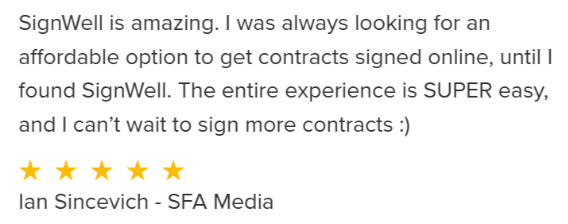
What Does “Its” Mean on a Signature Line?
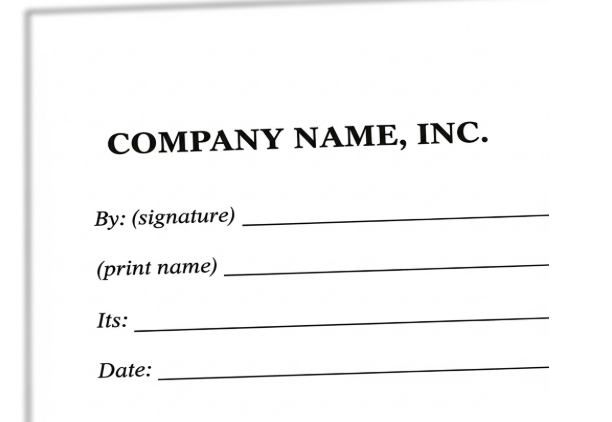
On a contract, the signature line is the section where a party signs to show agreement. In business documents, it often includes the signer’s name, title, and company information.
The word “Its” on a signature line specifically indicates the signer’s official role or title within the organization. It ties the signer’s name to the position they hold, confirming they are signing on behalf of the company and not as an individual.
For example:
“By John Smith, as its CEO.”
This shows that John Smith is signing in his capacity as Chief Executive Officer, which makes the agreement binding on the company rather than him personally.
Why “Its” matters on a signature line:
- Clarifies authority: Establishes that the signer has the legal right to represent the company.
- Limits personal liability: Protects the individual from being personally responsible for the contract’s obligations.
- Ensures legal enforceability: Courts may reject a contract if the signer’s role and authority aren’t clearly stated.
In short, the “Its” line prevents confusion between personal and corporate commitments, ensuring contracts are properly executed and legally sound.
“Its” on a Signature Line vs. Title on a Signature Line
- Capacity: “Its” specifies the signer is acting strictly in their official capacity for the organization, while “Title” only states the role, without clarifying that actions are on behalf of the company.
- Authority: Using “Its” confirms the signer’s authority to bind the company legally, while “Title” alone may simply describe a position without guaranteeing legal power to commit the organization.
- Liability: “Its” helps shield individuals from personal liability by confirming the commitment is corporate, whereas “Title” alone may blur responsibility and expose the signer to unnecessary personal risk.
- Clarity: Including “Its” makes it clear the signer is representing the company, not themselves, while “Title” can leave ambiguity about whether the signature reflects personal or organizational intent.
- Legal Validity: Courts favor contracts where “Its” explicitly confirms corporate representation, strengthening enforceability, while “Title” alone can create doubts that weaken the contract’s legal standing and authority.
Bottom line: Both terms appear on signature lines, but “Its” plays a more critical role by clarifying authority, limiting liability, and ensuring legal validity in binding corporate agreements.
Benefits of “Its” on a Signature Line
Adding “Its” on a signature line provides important legal and practical benefits that go beyond simply listing a title. Here’s why it matters:
- Faster contract execution: When the signer’s role is immediately clear, there’s less back-and-forth with legal or compliance teams, speeding up approvals.
- Reduced administrative errors: Documents often pass through multiple hands. A clearly defined title minimizes confusion about who signed and prevents contracts from being flagged or rejected.
- Improved record-keeping: Audit trails and compliance reviews become more straightforward when signatures clearly show the signer’s title. This is especially valuable during due diligence or regulatory checks.
- Professional presentation: Contracts with clean, complete signature blocks signal attention to detail and professionalism, which can strengthen trust with partners and clients.
- International consistency: In international contracts, explicitly stating the signer’s role helps overcome jurisdictional differences, ensuring the document is interpreted consistently across borders.
How to Fill Out “Its” on a Signature Line
Below is a step-by-step guide to completing the “Its” line, with practical insights on how digital signing tools simplify the process.
1. Understand the Purpose of “Its”
The word “Its” on a signature line refers to the title or position of the person signing on behalf of a business entity. For example, if John Smith is the CEO of a company, the correct format would be:
By: John Smith
Its: CEO
This format shows that John Smith is not signing as an individual, but rather in his capacity as CEO. Without this designation, courts could question whether the document binds the company or only the person.
If you’re unsure about how electronic contracts hold up legally, take a look at What Is an Electronic Signature? for a detailed breakdown of how digital signatures function and why every field, including “Its,” matters.
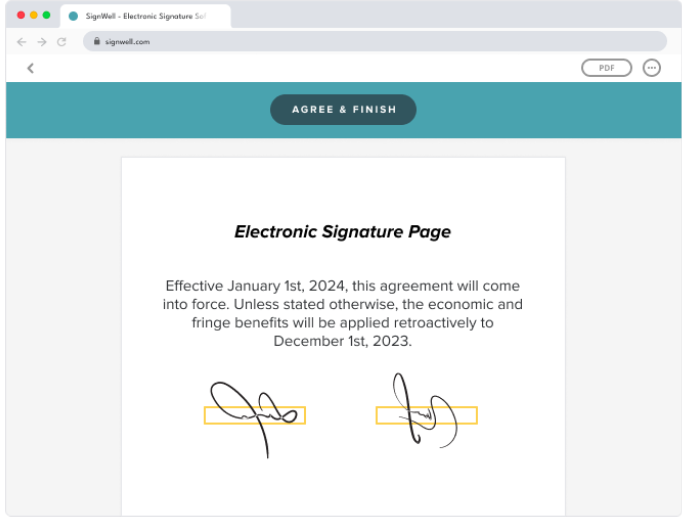
2. Identify Who Is Authorized to Sign
Not every employee has the authority to sign contracts. The “Its” line makes this explicit by tying the signature to a recognized position within the organization (CEO, CFO, Manager, etc.). Before filling it in, confirm whether the signer’s role grants them legal authority.
For example, a junior staff member cannot bind the company to a multimillion-dollar contract. Only executives or designated officers should sign with “Its.” To understand the legal framework behind digital signing authority, check out Electronic Signature resources for more context.
3. Fill Out the Line Correctly
When writing in the “Its” field, be precise. Use the exact corporate title, not an informal or shortened version. Instead of writing “Owner,” specify “President,” “CEO,” or “Managing Director,” depending on the role recognized in the company’s bylaws.
A proper example:
By: Jane Doe
Its: Chief Financial Officer
This ensures legal clarity and avoids ambiguity. To see how digital tools can simplify this, try Sign Documents Online for Free where you can add structured fields like “Its” automatically.
4. Use Templates for Consistency
Errors often occur when contracts are drafted from scratch. To avoid missing fields like “Its,” businesses should rely on standardized contract templates. These templates automatically include the necessary signature blocks and reduce the risk of oversight.
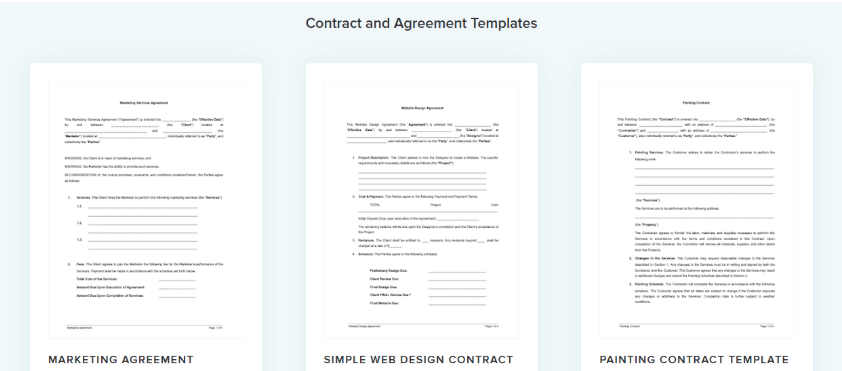
Instead of retyping contracts, you can choose a prebuilt template that already includes “By” and “Its” lines. This makes filling out the section quick, consistent, and error-free. You can access free Contract Templates to ensure your agreements always include the correct signature structure.
5. Double-Check Before Sending or Signing
Once the signature line is filled out, review the contract carefully. Check that:
- The signer’s name is correct.
- The “Its” line reflects the official title.
- All parties included have matching signature blocks.
Missing or incorrect information in the “Its” field could result in disputes, delays, or even an invalid agreement. With tools like Online Signature, you can securely review and finalize contracts without worrying about overlooked fields.
6. Automate with eSignature Platforms
Manually managing contracts leaves room for errors. That’s why many businesses now rely on eSignature platforms. These tools let you set up digital workflows where signature fields, including “Its,” are automatically placed in the correct format.
Automation ensures every document follows the same structure, making it faster, more consistent, and legally sound. You can also track signers, send reminders, and securely store completed agreements, all within a single platform. If you frequently use PDFs, tools like Sign PDF allow you to upload documents, insert signature blocks, and complete “Its” fields with a few clicks.
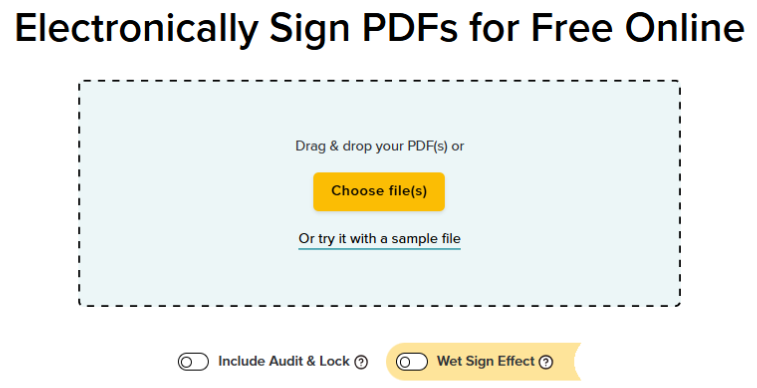
7. Keep Records for Legal Protection
Once signed, the document should be securely stored. If a dispute arises, you’ll need to prove that the person who signed had authority. Having the “Its” line filled out clearly and backed by digital records strengthens your case.
Modern eSignature tools keep time-stamped records of who signed, when, and in what capacity. This provides a legal audit trail that is far stronger than relying on paper records alone. With Sign Documents Online for Free, your signed contracts are stored securely, making retrieval and verification effortless.
Complete Your Contracts with Confidence Using SignWell’s eSignature
Understanding how to correctly sign a document and use titles like “Its” on a signature line ensures your contracts are legally binding and clear. Getting this detail right can save you from potential legal complications down the line.
With SignWell’s eSignature API, you can simplify and automate your document signing process, ensuring that every signature, title, and date is properly recorded. Our solution guarantees compliance with legal standards and provides a seamless experience for all parties involved.
Ready to eliminate paper delays and streamline your contract signing? Start using SignWell today.
Get documents signed in minutes.
Simple, secure, affordable e-signatures
by  .
.
Get Started Today
businesses served
customer support satisfaction
documents signed